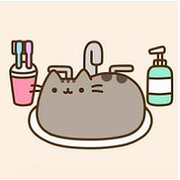|
Rick posted:I don't necessarily love LIFX lights but they run pretty independently of a hub so that's an option at least. With no network of course you do need to be within range to actively control them (well, if IFTT and the lights are both behaving correctly sometimes you can use that for out of house control) but they'll run a schedule and such on their own. Also they are Apple Home compatible so if you ever feel like going that direction with an Apple TV as a hub in the future that is open to you. Hue on sale is still more than LIFX, but theyíre a lot better bulbs too. I agree though that LIFX isnít terrible and probably the best 2nd tier bulb. Stay away from GE Cync or Feit or random Amazon brands.
|
|
|
|

|
| # ? May 11, 2024 10:57 |
|
other people posted:I would like to buy a lightbulb I can control with my phone and set schedules for. It needs to be dimmable and it would be cool if it does different colors. I don't have any automation setup in my house and I don't have any desire to get started with that. Hue Bluetooth bulbs have a distinct marking on the box, if it hasn't it requires a bridge. Also there is a maximum number of bulbs you can pair with your phone. All in all, the bridge is the better option if you have to handle more than say four to six bulbs OR if you want to handle them remotely(or do automation).
|
|
|
|
Neat, my Eufy lock/camera/fingerprint kickstarter thing just shipped! a few months behind schedule but hope it's neat. Now I'll have to get a new door lever that matches its aesthetic.
|
|
|
|
I think my Logitech Circle doorbell is bricked 😫 Tried everything to get it to reconnect to Home but nothing.
|
|
|
|
In more happy news. HomeAssistant support for Lutron RA3 is coming soon!!! See: https://github.com/gurumitts/pylutron-caseta/pull/101
|
|
|
|
Annoyingly the eufy smart lock doesnít come with the round deadbolt face like all other locks do so I have to request it from their support. I guess I can chisel out the area to fit the rectangular one and it would be more secure, but I donít really wanna.
|
|
|
|
I need help. I have a house full of Lightify stuff... outdoor lights, under cabinet lights, flood lights, etc. Over the past year, my Lightify hub has flaked the gently caress out. I can manually control the lights individually and as groups, but it will not run a schedule at all... I had it previously set up for daytime / nighttime scenes. I want to replace the Lightify hub with something that will control all the lights. I know I need Zigbee compatible, and it seemed like the Philips Hue Bridge would do what I needed... and I bought one and set it up. It's on the network and I have the Hue app and the Hue Essentials app (that looks a lot like the old Lightify app), but I cannot get either app to recognize even one bulb. What is my best course of action?
|
|
|
|
If I was going to put in light and fan switches in a bunch of rooms and I donít already have switches, what should I look into? I have Home Assistant with Zigbee and ZWave. I think Caseta would work but I think someone recommended a different system.
|
|
|
|
I'm going to piggyback on the light questions and see if anyone knows of a brand that will meet what I am looking for. I am trying to replace my new bedroom ceiling fan's light and fan switch. It has separate lines for the light switch and the fan switch (2 gang box red & black + neutral), though I don't mind a single switch replacement. The part that is giving me trouble finding something to match is the light is super bright when turned on by default, so I am looking for something that can change the default brightness to something lower (I don't think you can do this with Caseta which was the first one I was looking at). My fan doesn't have a pull, so the fan switch would also need to have speed control. I would prefer something that has switches that look and act similar to a normal rocker switch. The last nice to have would be a physical remote, an app would work but is not preferred.
|
|
|
|
dalstrs posted:I'm going to piggyback on the light questions and see if anyone knows of a brand that will meet what I am looking for. It's not a completely "normal" rocker switch, but i have been SUPER happy with the Lutron Maestro Fan/Light Control switch. https://www.homedepot.com/p/Lutron-...MR-WH/203489683 You would have to put the control unit up behind the fan, but i was super happy with my 2 installs, and would(will) install again when i replace my living room fan next weekend. The light and fan switch both have "last setting" memory. High/Full is available as a double press of either switch.
|
|
|
|
toplitzin posted:It's not a completely "normal" rocker switch, but i have been SUPER happy with the Lutron Maestro Fan/Light Control switch. Are those smart? I'm hoping to tie into Home Assistant for some control if there is not a remote.
|
|
|
|
Anyone have any experience moving to a fresh install of Home Assistant while using an S2 enabled Z-Wave adapter? Something about my install of HA just seems borked for dashboards, custom cards refuse to load no matter what I do, so I was going to just nuke it and start fresh but I know the documentation for Z-Wave JS mentions preserving a token/key for the adapter and I can't seem to find it (either in the interface or that I saved when I set it up). I was planning to just remove the existing Z-Wave devices I have from the network and then re-join them once I set up the new HA instance, and it sounds like this is for if you didn't unpair the z-wave stuff beforehand but I wanted to double check."HA Documentation posted:For new installations, network security keys will be automatically generated for you. If this Z-Wave stick has already been paired with secure devices, you need to enter the previously used network key as the S0 network key. S2 security keys will be automatically generated for you. Make sure that you keep a backup of these keys in a safe place in case you need to move your Z-Wave stick to another device.
|
|
|
|
dalstrs posted:Are those smart? I'm hoping to tie into Home Assistant for some control if there is not a remote. Caseta instead of Maestro. My bad.
|
|
|
|
Caseta ties in to HA just fine. Only have 1 device on it, but it works great. Been planning on decking the whole house out with it (at least, where it makes sense), but RA3 is supposed to a lot better and is soon to get HA support. And either way it's a couple grand and several weekends worth of work so lmao if I'm going to get that done any time soon.
|
|
|
|
toplitzin posted:Caseta instead of Maestro. My bad. As far as I can tell, the Caseta will always default to maximum brightness when the switch is toggled on. Also, I don't think the Casetas have switches that look close to a normal switch. I'm surprised how hard this has been to find. Every solution seems to meet 3/4 of what I am looking for.
|
|
|
|
Casetaís are completely, stupidly reliable. Iíve never had a single switch not respond to HomeKit commands or automations. I compromised a bit of aesthetics for reliability and Iím super happy with mine. My wallet, however, is not.
|
|
|
|
dalstrs posted:As far as I can tell, the Caseta will always default to maximum brightness when the switch is toggled on. Also, I don't think the Casetas have switches that look close to a normal switch. I don't know too much about Lutron stuff, but I did see this youtube video the other day which talks about their new Diva Smart Dimmer, which I believe has a brightness limit and looks more like a normal switch. https://www.youtube.com/watch?v=bHxIi79tRG0
|
|
|
|
GigaFuzz posted:I don't know too much about Lutron stuff, but I did see this youtube video the other day which talks about their new Diva Smart Dimmer, which I believe has a brightness limit and looks more like a normal switch. I guess I'm a bit confused by the last few posts because all of my dimmer switches, smart or not, turn on the the last set brightness when you toggle them on physically or via zwave. I've not run across a switch where this is not the default behavior.
|
|
|
|
GigaFuzz posted:I don't know too much about Lutron stuff, but I did see this youtube video the other day which talks about their new Diva Smart Dimmer, which I believe has a brightness limit and looks more like a normal switch. I hadn't seen the smart version of this switch. I can probably make the caseta fan switch work with this light switch. Motronic posted:I guess I'm a bit confused by the last few posts because all of my dimmer switches, smart or not, turn on the the last set brightness when you toggle them on physically or via zwave. I've not run across a switch where this is not the default behavior. I don't have any smart switches yet, but after reading reviews, this did not seem to be the case. Either way, being able to change the default means I don't have to worry about being blinded by turning on the light at night.
|
|
|
|
dalstrs posted:As far as I can tell, the Caseta will always default to maximum brightness when the switch is toggled on. The trick is the dimmer buttons work even when the light is off. Press the down button to turn the lights on at their minimum level, the up button will adjust them up from dim.
|
|
|
|
Three Olives posted:The trick is the dimmer buttons work even when the light is off. Press the down button to turn the lights on at their minimum level, the up button will adjust them up from dim. My wife wouldn't remember to do that but it looks like it doesn't matter anyways. I bought the Diva smart switch and installed it. Turns out the light that was supposed to be dimmable is not actually dimmable. So I have to decide if we want to live with the too bright light or retrofit new LEDs in the fan I just installed.
|
|
|
|
What are the recommended DIY security systems here? I donít want a monthly fee with a 5 year contract because I have to pay off $2K of equipment at 0%. My wife wants that but I think weíd be better served with some blink outdoor cameras and a camera/floodlight setup over my garage. House is a new construction so Iíve been approached by CPI and ADT and CPI seems to have better equipment (and they did all the low voltage wiring in the house) but I donít need that expensive of a setup. I would like cameras to cover the exterior, a doorbell camera and thatís really it? We both work from home so I donít really see the need for something elaborate enough to have a $40-60 monthly payment.
|
|
|
|
I just use Ring. They're easy to set up and the app is OK enough. I think I'm on one of their legacy $100/year plans, unlimited cameras. I've got the Doorbell Pro (one of the old ones), 2 outdoor battery cams with solar panel, outdoor flood light cam, and an indoor stickup cam. There's a Ring homebridge plugin too if you want to get them into HomeKit. It's pretty neat having a live window pop up in the corner of my Apple TV when someone rings my doorbell. Lets me decide whether I really need to get off the couch and answer the door. I didn't like Blink cams because the notification suppression schedules in the app were like account-wide or something, instead of per-camera. I want notifications for every motion on my doorbell and driveway cams, but only want them for my back yard and pool cams after 11pm, etc.
|
|
|
|
Douchebag posted:What are the recommended DIY security systems here? I donít want a monthly fee with a 5 year contract because I have to pay off $2K of equipment at 0%. My wife wants that but I think weíd be better served with some blink outdoor cameras and a camera/floodlight setup over my garage. I did AlarmGrid and self installed a Honeywell Lyric + took over the old original wired system. All the sensors show up in HomeKit so I can do brain dead simple automations like ďopening den sliding door at night turns on outdoor lights at 50%Ē when letting the dog out.
|
|
|
|
I'm building a barn and want to add smart switches and/or outlets to make it a little easier on my wife. She ordered these fans: Tornado - 18 Inch High Velocity Industrial Wall Fan with TEAO Enclosure Motor - 4000 CFM - 3 Speed - 6.5 FT Cord - Industrial, Commercial, Residential Use - UL Safety Listed https://a.co/d/7LIXgYU One building will have two of them and the second building will have three. My electrician originally recommended these HomeKit switches but is now saying they won't work (which is extremely loving annoying but whatever): Lutron Casťta Wireless Smart Fan Speed Control Switch, Single-Pole, PD-FSQN-WH, White https://a.co/d/7fVRvcD Is there any sort of HomeKit switch that will work? Or if not HK then something I could setup in HomeAssistant.
|
|
|
|
EC posted:My electrician originally recommended these HomeKit switches but is now saying they won't work (which is extremely loving annoying but whatever): You're going to have to get a reason why your electrician said that. Because there is no reason those switches can't be used for a 1 amp fan control. If he's having an issue with code compliance putting a dimmer on an outlet there are ways to do this that sometimes vary by jurisdiction, but it's almost always possible. He needs to talk to the AHJ and ask if this is the issue.
|
|
|
|
Motronic posted:You're going to have to get a reason why your electrician said that. Because there is no reason those switches can't be used for a 1 amp fan control. Maybe it's because I wanted to control multiple fans with one switch? Like ideally all three in the second building would be controlled simultaneously. But idk anything about electric poo poo Į\_(ツ)_/Į
|
|
|
|
EC posted:Maybe it's because I wanted to control multiple fans with one switch? Like ideally all three in the second building would be controlled simultaneously. But idk anything about electric poo poo Į\_(ツ)_/Į If you don't know the problem nobody can suggest a solution.
|
|
|
|
From a quick read, those fans just plug into an outlet and are speed controlled with a knob on them, or something. A fan controller will not work if thatís the case. You probably want the regular Caseta switch, PD5-ANS. That will switch an outlet / load on or off and Iím struggling to think about why that would be banned in this case.
|
|
|
|
movax posted:From a quick read, those fans just plug into an outlet and are speed controlled with a knob on them, or something. A fan controller will not work if thatís the case. Yeah that's what I'm realizing. Talked to the contractor again today and that will totally work, so that's what I'll use.
|
|
|
|
movax posted:From a quick read, those fans just plug into an outlet and are speed controlled with a knob on them, or something. A fan controller will not work if thatís the case. Most ceiling fans work like this and a fan controller works just fine. You switch the fan to the highest setting and then use the fan controller for any speed control. Unless there is something else going on here I'm not seeing the problem.
|
|
|
|
I want to run cat6 in my house but where I have the switch etc how do I take like 20 cables into the wall at that one point properly?
|
|
|
|
slurm posted:I want to run cat6 in my house but where I have the switch etc how do I take like 20 cables into the wall at that one point properly? Terminating the cables to a patch panel is certainly neater if you're comfortable with using one and you've got a rack to put it plus the switch in but it's going to be annoying for the next people if you sell the house. Multi-port wall plates usually end up looking messier with cabling but are significantly easier to use if you don't want to rack-mount stuff (plus they're easier for anyone who buys the house if you sell it). If you get the cables run through conduit you can theoretically use them as guides to pull through replacement cables and just switch out the plates later on.
|
|
|
|
slurm posted:I want to run cat6 in my house but where I have the switch etc how do I take like 20 cables into the wall at that one point properly? Hang some variety of wall mount mini-rack along the lines of https://www.amazon.com/StarTech-com-Bracket-Equipment-Mounting-WALLMOUNT6/dp/B0B9M5LMYM/ and then you have a place for the patch panel, switch, and whatever other equipment you want to put there. I prefer the keystone style patch panels for small installs because they're easier to modify in the future and can support other kinds of connections like coax if you feel like cleaning up other wiring. 110 style is a bit quicker for bulk installs but much harder to work on down the line. Mercurius posted:but it's going to be annoying for the next people if you sell the house. quote:(plus they're easier for anyone who buys the house if you sell it).
|
|
|
|
wolrah posted:For 20 I'd definitely do a patch panel rather than wall plates. Presumably that means a 24 port or larger switch will be in play, which generally means 1U rack size anyways. I've never seen anyone here leave any wall mounted racks or communications equipment in a house when they sell it. Most people would take the rack/patch panel with them so they simply cut off the cables and leave a bunch of tape over the ends of the cables which just leaves a mess for the next people who move in to deal with. Data outlets are at least still going to be there on the wall regardless since they're terminated completely differently.
|
|
|
|
Mercurius posted:I suppose it might be different outside of Australia but here you have to get licenced cable installers to do any data cabling work and most of the time that's done by standard electricians who have a cabling licence. They tend to be quite capable of terminating cable into wall plates since they're used to doing so with power cable but they're not telecommunications people and most of them aren't familiar with terminating stuff into punch down blocks on a patch panel. quote:I've never seen anyone here leave any wall mounted racks or communications equipment in a house when they sell it. Most people would take the rack/patch panel with them so they simply cut off the cables and leave a bunch of tape over the ends of the cables which just leaves a mess for the next people who move in to deal with. When I move big racks I at least try to unhook the patch panels and leave them behind if possible. Sometimes that's not practical and it's getting cut, but it'd be a real dick move to do that over a single patch panel and a cheap minirack. quote:Data outlets are at least still going to be there on the wall regardless since they're terminated completely differently.
|
|
|
|
wolrah posted:In the majority of the US anything "low voltage" (read: POTS voltage and below) is basically unregulated beyond plenum-grade wire being required in certain locations. I generally have a reaction of fear if I hear someone had their electrician install data wiring.  . Here you're required by law to have licenced people working on house wiring (and insurance companies will cheerfully throw you under a bus if something goes wrong and you don't) which explains the difference in approach. . Here you're required by law to have licenced people working on house wiring (and insurance companies will cheerfully throw you under a bus if something goes wrong and you don't) which explains the difference in approach.
|
|
|
|
Mercurius posted:That makes more sense and also explains a bunch of the horror stories I see here about wiring in American houses Not that things can't go wrong with low voltage, but is it really common enough that insurance companies go nuts over "unauthorised" data cabling? Now I'm picturing a fire marshal down under holding up a wall-to-computer patch cable at a press conference deriding "unlicenced suicide cables"
|
|
|
|
When pulling out low voltage stuff at my house recently (door bell transformer stuff) and some of the things I found made me surprised the doorbell even worked. Multiple splices that went nowhere, some just shoved into insulation in the attic, found one run where the cut ends were wrapped in tinfoil... Not that I think any regulation would have changed that, as POs will PO. But it seems excessive to me for low voltage to be regulated that heavily.
|
|
|
|

|
| # ? May 11, 2024 10:57 |
|
Mercurius posted:I suppose it might be different outside of Australia but here you have to get licenced cable installers to do any data cabling work and most of the time that's done by standard electricians who have a cabling licence. They tend to be quite capable of terminating cable into wall plates since they're used to doing so with power cable but they're not telecommunications people and most of them aren't familiar with terminating stuff into punch down blocks on a patch panel. In the US no one cares. I've run a fair amount of it in my industrial-setting job and we just kind of handle it like any other cable without any special knowledge or training honestly.
|
|
|








 EVERYWHERE
EVERYWHERE 


















